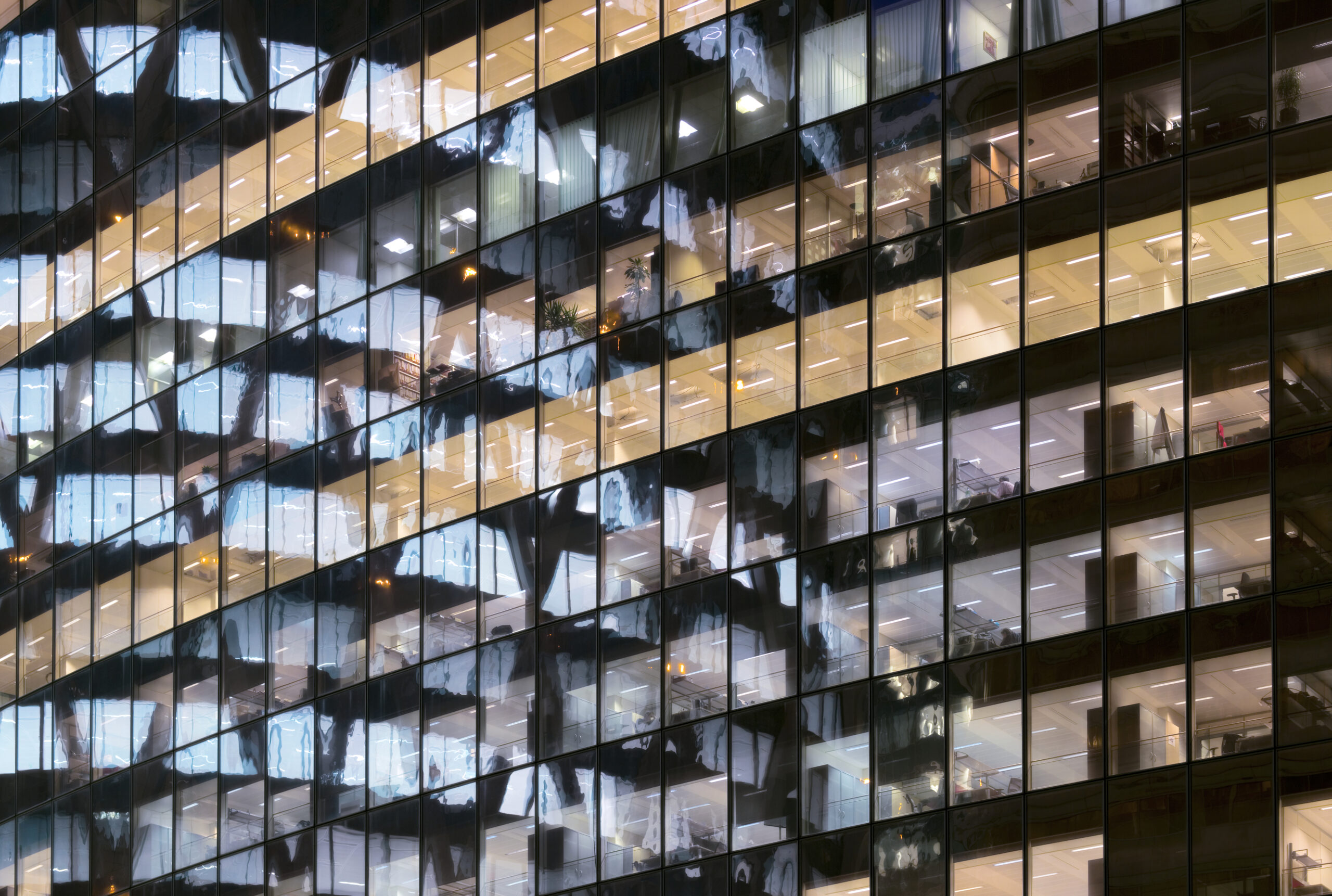
As the pandemic leaves offices empty in cities around the world, creative building owners and architects are figuring out how to repurpose what were once office spaces into residential or institutional new uses.
Photo: Getty Images
The work from home revolution is having a profound effect on office space in cities around the world. In some places, as much as 50% of the office space is lying vacant. Some empty offices can be converted to residential apartments, but that can be complicated.
BRINK spoke to Tracy Hadden Loh, fellow at the Brookings Institution, about the trends she is seeing in the urban space.
HADDEN LOH: There is now a good amount of data to start bracketing this trend, and what we’re seeing is that across the board, there is a structural reduction in office space demand in the near to medium term.
How much vacancy varies from place to place. There are places in the U.S. where office occupancy is down 20% or 30%, which is a big amount, but not necessarily catastrophic — there are also places where it’s down 50% or more. Those are the places where you start to hear rhetoric like downtown is a ghost town.
The composition of the city plays a role, in that some sub-sectors of the knowledge economy are much more favorable to remote work than others. So for example, in the tech sector, it’s far more common to find workplaces that are fully remote, whereas in finance, we’re seeing a preference for in-person work.
One thing the pandemic did was force a lot of people to adopt remote work all at the same time, which eliminated the fear of missing out, or FOMO, aspect of remote work, because if everybody is doing it all the time, then you’re not missing something at the office.
As people start to return, you can get to a point in critical mass where FOMO is going to start to kick in again. That applies both within a firm, but also between firms. As one firm returns to in-person work — clients, colleagues, friends, acquaintances, family members who work in completely different sectors, firms, et cetera — if there are connections that are back at the office, that will also draw people.
Repurposing the Office
BRINK: So how is empty office space currently being used?
HADDEN LOH: Because commercial real estate leases tend to be very long — 25-year leases are not unheard of, 10-year leases are quite typical — there’s a big lag in terms of negotiating what’s happening with space, so there is just a huge amount of space that’s just sitting empty right now.
Some places are starting to adapt. They’re giving out free or extremely subsidized retail space at the street level of these office buildings. Then, as tenants give up their leases and buildings become more vacant, the owners are looking at adaptive reuse possibilities and figuring out what else a building can become.
BRINK: How easy is it to adapt an older office or any office building to residential use?
HADDEN LOH: Generally speaking, office real estate is going to be located in relatively accessible locations, and so even if the building is not desirable in its current use and configuration, the location is still quite desirable. But it’s unusual for an office building to be at 100% vacancy and to be available for adaptive reuse, so just getting to 100% vacancy is something that can take quite a bit of time.
Once you’re there, the challenge is that buildings that were built as office buildings that are intended to be used for office work are fundamentally different from other kinds of uses. In terms of the availability of natural light, where the plumbing stack is, how the HVAC works and where it’s located, there are major challenges in adapting the structures.
In some cases, it’s simply more straightforward to just demolish the old building and build something new to suit the new use. That said, adaptive reuse, of course, is possible, and we’re seeing lots of cases where creative building owners and architects are figuring out how to repurpose what were once office spaces into residential or institutional new uses.
Most people don’t get to live in neighborhoods like this. Even if some fraction of commercial real estate can be repurposed as housing, that is a really teeny drop in the bucket of housing needs. But what this does make available is a small supply of extraordinary housing in incredible locations.
The Fiscal Impact
BRINK: If this happens on a significant scale in the city, what’s the impact fiscally for municipalities?
HADDEN LOH: There is a fiscal impact, so it would not surprise me if cities start to revisit their fundamental tax structure in order to mitigate that impact. Typically, in a city, commercial real estate is likely taxed at a higher rate per dollar of assessed value than homestead real estate. In the United States, on average, across major U.S. cities, commercial real estate is taxed at 1.6 times the rate of homesteads. So, that means that each square foot of commercial real estate is worth 1.6 times what one square foot of owner-occupied housing is to the tax base of the city.
We’re seeing lots of cases where creative building owners and architects are figuring out how to repurpose what were once office spaces into residential or institutional new uses.
Given that, one thing cities can do in order to address the impact is to favor rental housing, because rental housing is often taxed at a higher rate than homesteads. So, favor apartments over condos in planning and permitting. They can also redistribute the tax burden to lean less on commercial real estate and to rely more on sales and income tax.
BRINK: Do you think that this churn is going to lead to a significant change of design in inner cities?
HADDEN LOH: I do think that this is an inflection point for offices in terms of design. There is still strong demand for office space. Everybody doesn’t work remotely, and even amongst people who work remotely sometimes, most of them will also work in-person sometimes.
What is different is this collaborative, knowledge economy, wants a different kind of office than we did 30 years ago. So, first off, tenants in older office buildings are relocating to newer buildings that have more open floor plates, less storage, more natural light, and are in prime locations.
The Days of the Central Business District Are Over
There’s a growing realization that these central business districts where the land use is highly dominated by offices don’t produce great places that people want to be in. We’re past the days now where people feel like they have to be in such a location.
Making a great place requires a more balanced mix of land use that includes housing and amazing amenities like high-quality public spaces, lots of retail, lots of food and beverage, because people are consuming food and beverage prepared outside the home more than ever. These also need to be safe places; people don’t want to have to worry that they’re going to be hit by a car while crossing the street; they don’t want to listen to the noise of traffic. So, there’s a need to rethink streets and how they work in these kinds of neighborhoods as well.
You Can Do a Lot With Planters
In terms of younger cities, it’s really interesting to look at a place like San Francisco where tech is obviously huge as a share of their employment. I am really excited by the plan that San Francisco just released, doubling down on investing in high-quality public spaces and a people-centered public realm as a way to create a downtown that is livable and attractive.
One of the things that’s exciting about public spaces is that there is so much you can do that’s actually nearer-term, because you can take the existing canvas of the public realm, and with a few planters or a little bit of concrete, or some flex posts or some paint, you can reallocate space, you can incorporate new uses, you can bring in temporary or mobile structures in order to facilitate new kinds of uses and to attract diverse groups of people. There’s a lot that you can do that is what the Project for Public Spaces calls lighter, quicker, and cheaper.








